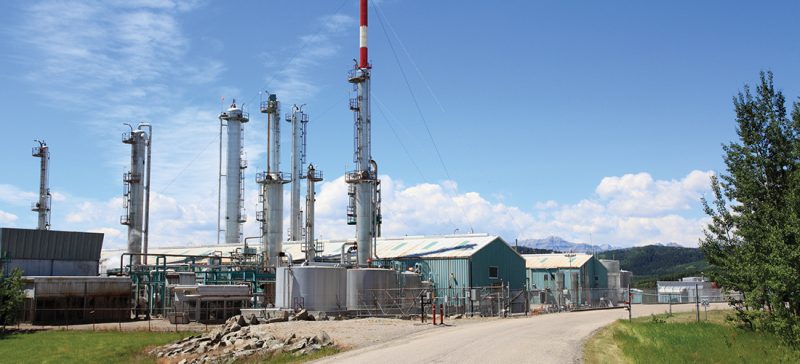
The Alberta government is launching three new incentive programs that combine a combination of royalty credits, grants and loan guarantees designed to encourage energy diversification. AlbertaInnovates.ca photo.
More petrochemicals, partial upgrading facilities part of Notley gov’t energy diversification plan
Under the Alberta government’s recently passed Energy Diversification Act, new jobs will be created and more private money will be invested under three new incentive programs designed to encourage diversification of the downstream energy sector, particularly in petrochemical manufacturing and partial upgrading of Alberta oil sands bitumen.
The $2 billion program will provide combination of royalty credits, grants and loan guarantees which the Notley government says will encourage growth in the petrochemical diversification program, petrochemical infrastructure program and partial upgrading program.
“Supporting energy diversification means supporting good jobs for working families and Albertans,” said Alberta’s Minister of Energy, Marg McCuaig-Boyd.
“We’re acting to ensure Alberta is competitive for major private investments and to build an economy to last.”
One billion dollars has been committed to encourage growth in partial upgrading while both the petrochemical diversification program and the petrochemical infrastructure program have received $500 million in funding.
Private industry is encouraged to apply to the program.
The Alberta Department of Energy says the three programs are estimated to attract more then $10 billion in private investment and will support about 8,000 construction jobs and create hundreds more operational jobs.
Businesses in the partial upgrading industry can submit applications for the Partial Upgrading Program until Sept.4, and can submit applications to the Petrochemicals Diversification Program and Petrochemicals Feedstock Infrastructure Program until Oct. 1.
Successful applicants will be decided by late 2018.
The petrochemical field, which is Alberta’s largest manufacturing industry, supports approximately 7,600 skilled employees and accounts for $8.2 billion in exports every year.
According to the Alberta government, Round 2 of the Petrochemicals Diversification Program will build on the success of the first round and expand its scope.
Applications are currently being accepted from petrochemical companies that require ethane in their operations. Ethane is used to manufacture products like plastic, as well as methane, used primarily as fuel, and to manufacture chemicals like ammonia, and propane, which is used for heat and fuel.
These are petrochemical feedstocks derived from natural gas. Applications to increase production at existing facilities will now also be allowed, after being excluded in the first round of the program.
The first round of this program in 2016 led directly to Inter Pipeline’s final investment decision on its $3.5-billion propane-to-polypropylene complex which is under construction in the Industrial Heartland near Fort Saskatchewan.
At the peak of construction, an estimated 2,300 direct full-time jobs will be created and, once complete, the facilities will employ 180 people. A second proposed project from Canada Kuwait Petrochemical Corporation is undergoing front-end engineering design work for its project.
A final investment decision is expected by early 2019.
The Notley government says that to ensure Alberta continues to have a strong supply of the building blocks needed for petrochemicals manufacturing, the Petrochemical Feedstock Infrastructure Program was created.
The program will encourage industry to move forward on the facilities and infrastructure needed to capture more natural gas liquids required for value-added development.
These could include new natural gas processing facilities, smaller projects built closer to wellheads or straddle plants, facilities that are built along major natural gas pipelines that can extract certain components during transportation.
The third part of the program addresses partial upgrading. The process reduces the thickness of oil sands bitumen so it can flow through pipelines more easily without having to be blended with diluent, a thinning agent such as naphtha. Partial upgrading increases the volume of the bitumen product as well increasing its value.
The Alberta government says that partial upgrading will enhance oil sands industry competitiveness by reducing industry costs, increasing pipeline capacity and enabling more refineries to process Alberta bitumen products.
As well, it would not limit future opportunities for full refining within Alberta.
The Partial Upgrading Program will support projects to develop this emerging technology in Alberta.
In May, after oil and gas industry companies were given the opportunity to review the draft application guidelines to ensure they met industry needs, over 30 responses showing strong interest were received.


Be the first to comment